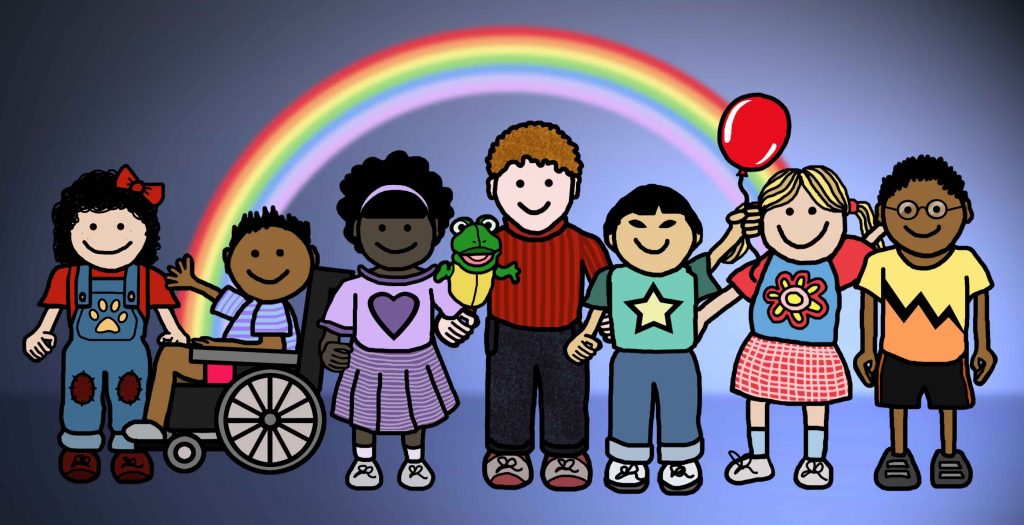By: Lola Aneke
Education forms a basic foundation for shaping the future of children. Some children learn very fast and others even possess unique abilities and talents that make them stand out from their peers. On the other hand, there are those who have been noted to imbibe knowledge or skills taught to them at a much slower pace compared to other children of the same age bracket. Children or adults who fall into this category are known as persons with special needs.
Individuals with special needs include those who are mentally or physically challenged in one form or another, and they require special education. In the past, providing special education services for children with special needs posed a huge challenge to educators due to the peculiarities of these children. However, contemporary research and technology have led to great advancements in the means of delivering education effectively to them. Nowadays, there are many related services available for special education. In many developed countries, research is ongoing with the objective of creating, even more, accessibility options for these exceptional students. However, in developing countries, children with special needs still have little or no access to special education and related services. Sometimes, the limited services available are affordable to only a few parents.
In exploring the major trends of providing educational services to exceptional learners (such as students living with autism) at the elementary level, the following areas have to be considered:
- special education and related services
- research-based practices for special needs students
- parents/family involvement
Children with special needs such as autism require some modifications in their educational process to accommodate their peculiarities. In some advanced countries such as the United States (US), the educational system is properly designed to cater for persons with special needs. This is summarized by the Individuals with Disabilities Educational Act (IDEA) which ensures that all children receive free and appropriate public education that meets their needs. Based on this, the methods of instruction are specialized to include special materials, teaching techniques, equipment, and facilities. In addition, related services are essential to this process, and these services include special transportation, speech-language pathology; audiological services; interpreting services; psychological services; physical and occupational therapy among others.
Indeed, for a child with special needs such as autism spectrum disorder (ASD), special educators are trained to offer not just effective instruction, but the instruction that is highly individualized, intensive, relentless, urgent, and goal-directed. The special educator would have to work as part of a team consisting of the individual, the parents, and other support staff. Thus, the goal of educating a child with special needs can only be reached through the application of this special education and related services using research-based practices.
There is already an increased level of awareness of special needs conditions such as autism. This is evident with various activities put in place to mark the World Autism Awareness Day. Despite this increase in awareness, there is still a huge information gap in developing nations on the current practices for meeting the needs of exceptional learners.
For a start, a very important issue in special education today is the identification of students with ASD and other special needs. How can a parent or a general education teacher identify a child with special needs? Using a US traditional classroom setting as an example, when a teacher observes that a child is struggling with school, the teacher is expected to try and exhaust his or her strategies for helping the student. Thereafter, a group of professionals, including special education teachers, counsellors, administrators, and psychologists, called a “pre-referral team” (PRT) would normally be convened. This PRT would work with the general education teacher to help identify alternative education strategies for the student before making a referral for special education evaluation.
Special education evaluation is a comprehensive assessment which examines a student’s functioning in three primary areas that impact learning aptitude, basic academic skill development, and personality/adjustment factors. This evaluation is normally conducted to determine whether a specific learning disability or other condition such as autism may be impacting a student’s academic performance, and how the student learns best. This could form the basis for appropriate intervention for the student.
Response to Intervention (RTI). RTI is a practice in the US for determining whether a child has a specific learning disability. This is a 3-tiered process which involves testing the child for change or lack of change in academic performance or behaviour as a result of instruction. In this process, the student first receives quality instruction in the general education classroom before a formal evaluation for special education services. As a result of the RTI evaluation, an Individualized Education Program (IEP) could then be developed for the student.
Individualized Education Program (IEP). On completion of a full special education evaluation, it becomes clear if a child is eligible for special education. Consequently, an IEP is developed. The IEP is the legal document in the US, that describes the educational services a student receives. This document spells out how a school (or a special education teacher) plans to meet the needs of an exceptional student. The IEP document normally contains a description of the unique characteristics or needs and present level of performance, the special services and modifications, and the annual goals and objectives or benchmarks related to the child’s need. The IEP team normally comprises the parents or a member of the family, the exceptional child (when required), a minimum of one regular education teacher, one special education teacher, a representative of the federal or state educational agency (who is qualified to provide or supervise the provision of specially designed instruction to meet the unique needs of children with disabilities), and other supporting staff including providers of related services.
Providing Special Education (Implementing Inclusive Teaching Practices).
There are many administrative plans that could be adopted for educating exceptional learners. These range from a few special provisions made by the student’s general education teacher to full residential care in a special facility. The location and the provision of special education services depending on the extent of differences between the exceptional student and other typical students. It also depends on the resources available in the school. Some exceptional students may not require the services of special educators. However, this occurs only when the general educator has a good understanding of the students’ individual needs and is skilled at meeting them with the appropriate materials, equipment, and instructional methods.
Conversely, the general education teacher may need to consult with a special educator or school psychologist in addition to acquiring special materials, equipment and methods. In some instances, exceptional learners could be supported through co-teaching. Co-teaching involves collaborative planning, classroom support, and consultation between the general educator and a special education teacher. This type of support may be reduced at the early primary school level because teaching strategies are still concrete, visual and rote. At the later primary school age, students with ASD would require more support because their instruction becomes more abstract and conceptual. At this point, some students may require more time in a pull-out resource situation, instead of more support in a regular education program.
Furthermore, in situations where three or more students are pulled out for special education services, it would be appropriate to place them in a self-contained classroom. There they would receive more intensive instruction to meet their specific educational and therapeutic needs in a small group. They could also be involved in selected mainstream activities and participate with other children in less restrictive settings. In all these, the primary consideration should be how to best individualize the instructional program to meet each child’s needs.
In teaching children with ASD, data must be collected regularly and methodically for review so that the appropriate intensity of services can be determined and progress monitored.
Parents/Family Involvement
According to Anne Henderson, in the book – The Evidence Continues to Grow, “When parents become involved, children do better in school.” This holds true with regard to parents and families who have children living with ASD. Therefore, it is strongly recommended for parents to form an integral part of the assessment and planning team for their exceptional children.
Parents are best positioned to provide very useful information about the child that may not otherwise be observed or known. They understand what motivates, interests and comforts their child more than any other person and this information is crucial to a teacher’s planning for the child. It is true that the teacher plays a vital role in creating partnerships with parents in the educational process. However, the parents’ active involvement enhances the probability that the skills their child learned at school would be generalized to home and other environments.
In finding the right educational program for a child with ASD, here are a few recommended questions for parents to ask: a. What are the credentials of the staff, and who will be around your child? b. What is the schedule for the day’s activities? Will parents be allowed to observe the classroom before enrolling their child? c. What therapies does the school/program provide? Can private therapists work with your child at the school? d. How does the staff communicate with parents? e. Does the school/program create opportunities for parents to meet and network? f. Will parents be allowed to participate in the IEP? g. How many children attend the program? What is the staff-to-child ratio? Are the children divided into groups by age or in some other way? h. How often are the teaching staff trained to work with exceptional children? Is inclusion one of the training topics? What experience has the staff had in working with children with special needs? i. What is the discipline policy?
- If your child is unable or would prefer not to do an activity (eg. swimming or a field trip), what is the alternate activity? k. If your child would like to do a certain activity but may need additional support, is the staff willing to make individualized accommodations (such as help changing into a swimsuit, headphones during loud times, help with using the bathroom, feeding, etc.)? l. Are our staff members willing to have a support person come in to facilitate inclusion efforts for your child and others? m. Does the school/program have a board of directors for parents to share positive and negative experiences?
These questions would serve as a guide to parents of children with ASD or other special needs in making their choices for their child’s education. In the end, the goal of any special needs program is to make the child feel successful, learn new skills and feel good about themselves as they grow into productive adults.
In most developing nations, the education of children with autism and other special needs faces many challenges. Some of these challenges include:
- Inadequate legislation in favour of persons with disabilities particularly developmental disabilities, negative societal attitudes, the lack of, or inadequate evaluation and identification plans, lack of guidance services and special education capacity in public schools, even at the most basic level. There are no appropriate policies in place that mandates educational institutes to adequately cater for the education of children in general and education of children with special needs in particular. Thus, children with special needs are abandoned and their education is faced with a haphazard attitude, exposing them to a poor learning foundation.
- Lack of Assessment in Public Hospitals. There is no proper identification and assessment practice that immediately checkmates the presence of disabilities or disorders in children after childbirth. This is to enable the appropriate authorities to provide intervention programs for affected children as a form of early intervention. Hospital management should, therefore, create identification and assessment units under their maternity or pediatric department with the sole purpose of assessing and identifying disabilities and disorders in babies after childbirth, so as to enable referral to the right intervention programs.
- Lack of Special Education Capacity in Public Schools. The current situation of special education needs to be urgently addressed. In my view, the importance of early intervention as well as intensive instruction in meeting the needs of children with ASD cannot be overemphasized. Therefore such children should be placed where adequate instruction can be provided effectively. Consequently, I recommend a two-pronged approach. The first is to emphasize the inclusion of children with ASD into general education schools. This entails that general education schools would make some modifications to adequately accommodate children with ASD in general education settings. The modifications should include the following: a. Identification, assessment, and regular progress monitoring. IEPs (with parental involvement). c. Regular communication and meetings with parents d. Program evaluation. e. Collaborative consultation. f. Co-teaching and other team arrangements. g. Curricular and instructional strategies. h. Accommodations and adaptations. i. Training general education teachers to accommodate diversity. The second approach is to adopt “special day schools.” These types of schools would offer all-day placement for children with ASD who require higher levels of specialization or dedication to their needs. The special school would be expected to provide learners with special equipment and methods of instructions necessary for their care and education. Some notable features of special day schools for children with autism are as follows: a. Highly specialized classrooms. b. Smaller class sizes. c. More individualized teaching (e.g. One-on-one). d. Significant flexibility in terms of curriculum. Generally, the two approaches should be able to offer adequate educational programming for students living with autism.
- Negative Societal Attitudes. The attitude of society to the state of being a child with special needs is not encouraging. This makes children and families with special needs children to withdraw and isolate themselves from participating in social and academic activities. The result of this is that the social and especially academic performance of these children becomes hindered. Advocacy and awareness programs should be created at the community level, supported by Governments, aimed at promoting the cause of special needs acceptance.
In my view as a special educator, inclusion in general education schools has some advantages over the special day schooling approach. Some of the advantages are a. The child acquires more academic or functional skills because of the higher expectation and greater stimulation in the general education classroom. b. The general education teacher, as well as non-exceptional students, benefit from learning to know more about children with autism. This will help reduce stigma and create awareness. c. Being around typical kids helps children with ASD acquire social skills.




